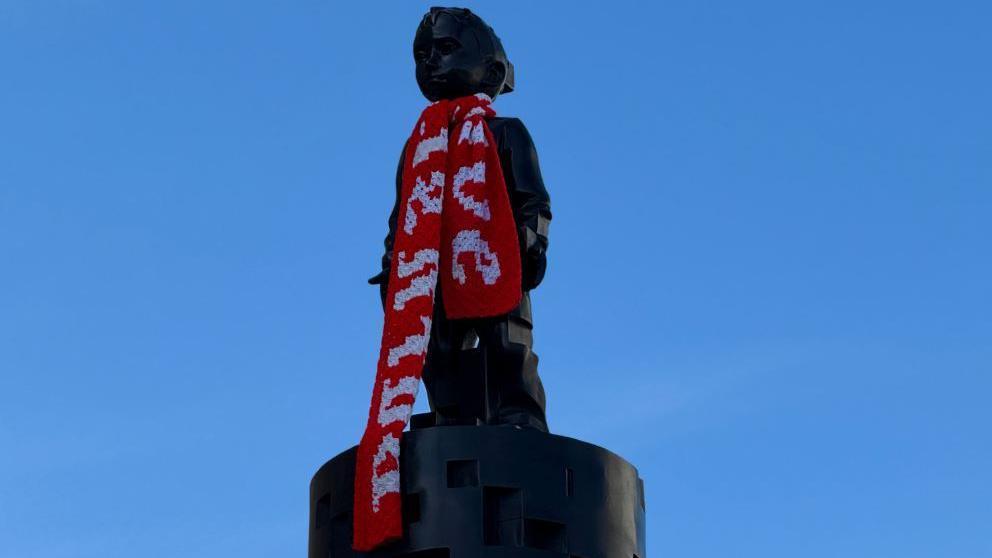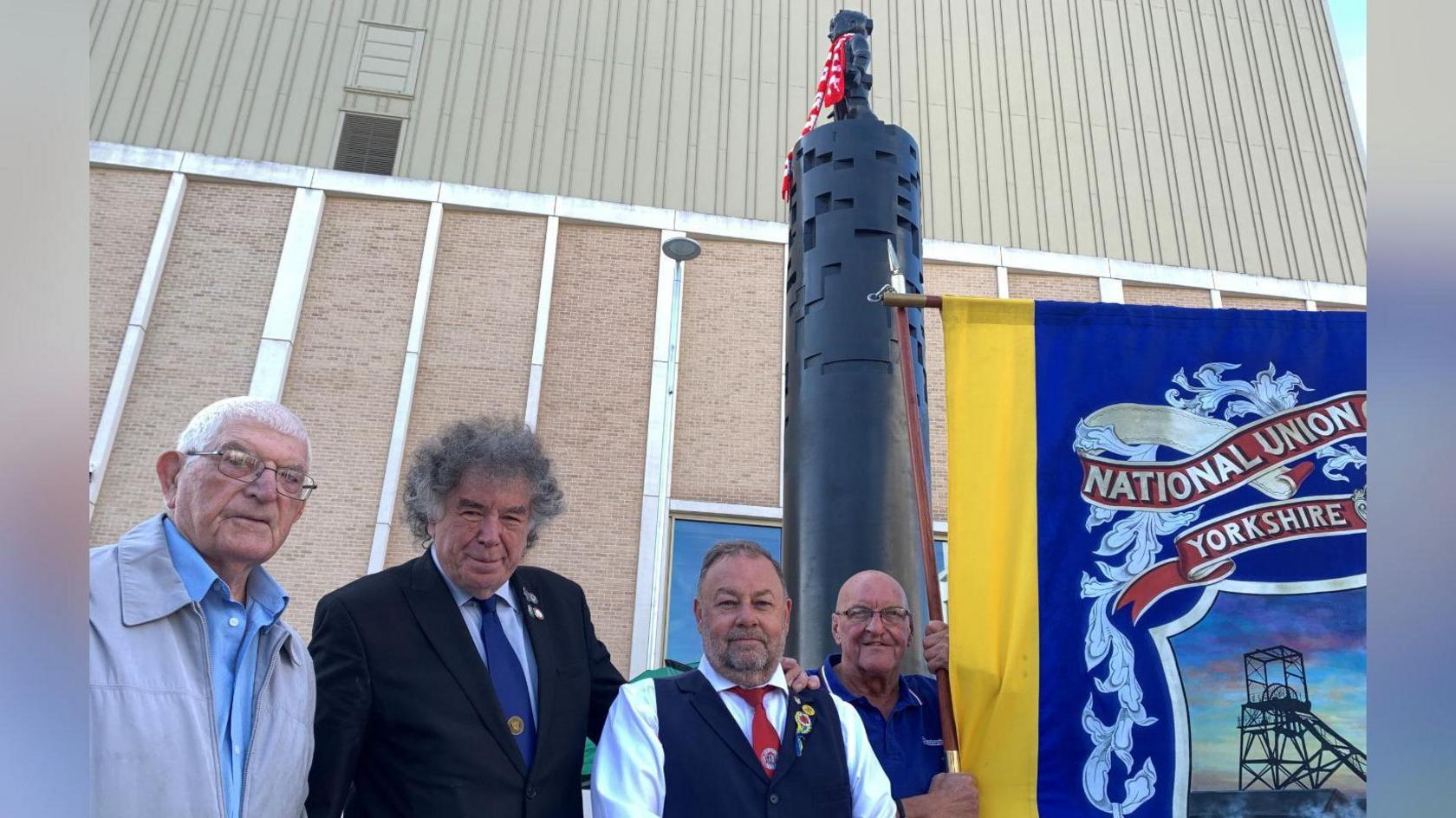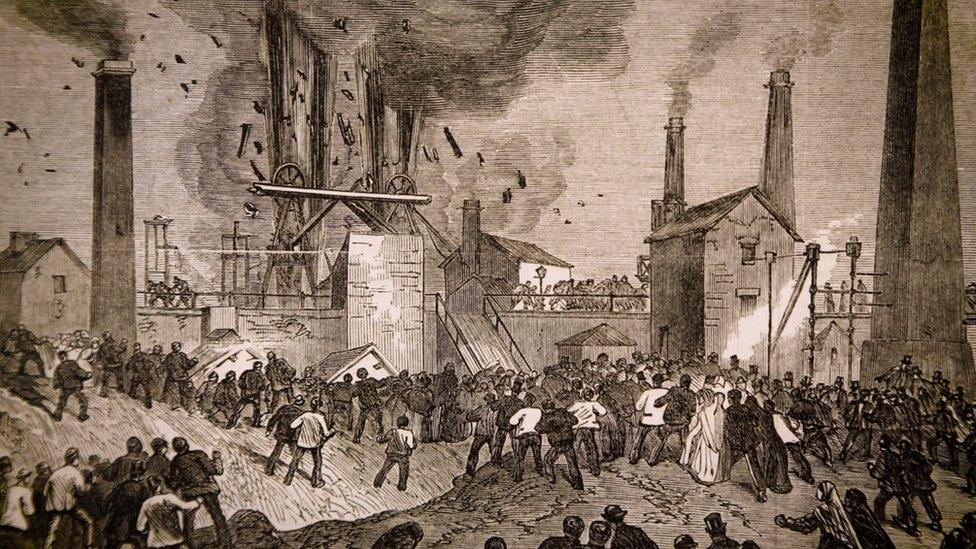Barnsley boy mining statue returned to town centre

People have "constantly" been asking when the statue would return, according to Barnsley Council's leader
- Published
A statue commemorating Barnsley's mining heritage has been reinstated in the town centre after a five-year absence.
The artwork depicts a boy standing on a six-metre column representing the Barnsley seam of coal and is surrounded by Yorkstone paving engraved with the names of local mines.
Originally installed in the town in 2012, it was moved into storage at the Yorkshire Sculpture Park in 2020 during the construction of The Glass Works and has now been positioned on Midland Street next to the Tommy Taylor Memorial Bridge.
Sir Stephen Houghton, Barnsley Council leader, said: "Mining made this town, made this borough, made us the people we are - we must not forget that."
He said people had "constantly" been asking about when the statue would be returned to the town centre.
Kenny Hunter, who designed the sculpture, said he was "delighted" at the Barnsley boy's return in a "prestigious and prominent" position.
The child faces Oakwell Stadium and was wearing a Barnsley FC scarf when unveiled.

The statue faces in the direction of both Oakwell Stadium and The Oaks, the site of England's worst mining disaster
"Hopefully from up there he can watch the football on a Saturday," Mr Hunter said.
The Made2Measure brass band performed at the statue's unveiling on Thursday, with the ceremony also attended by representatives from the National Union of Mineworkers.
Chris Skidmore, Yorkshire chair of the union, said he saw the boy – who is also angled towards the site of the Oaks colliery explosion - as a representation of young workers in the mines.
"Far too many kids got killed underground," he said.
"It is unwise to forget about what happened in those villages and the people not only who worked there, but the people who died there."
Mr Skidmore said the villages and small towns engraved at the base of the column still have an identity based in the coal mining industry today.
"It is a mining statue, but it's about the community it represents," he added.
Get in touch
Tell us which stories we should cover in Yorkshire
Listen to highlights from South Yorkshire on BBC Sounds, catch up with the latest episode of Look North
Related topics
Related stories
- Published16 September 2017
